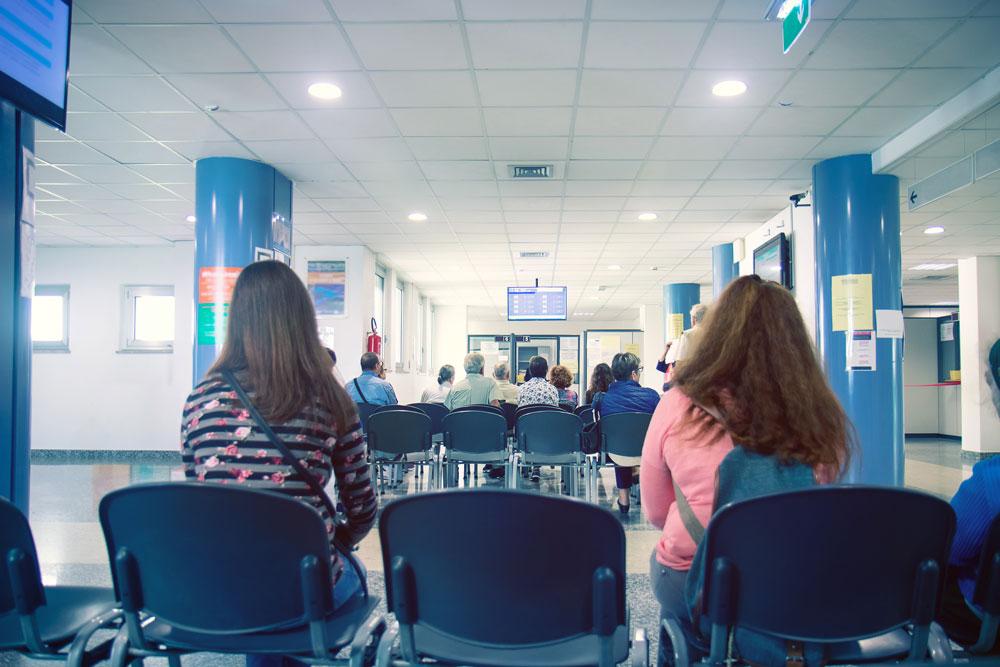Extra money is great, but more could be done to achieve best value from capital investment across the NHS. Katie Crookbain explains why
The new Prime Minister recently promised £1.8 billion capital investment to fund upgrades to our hospital estate and address backlog maintenance issues. There are questions about whether this is really enough – the Health Foundation has said £6 billion is needed to cover the national backlog maintenance requirements alone – but whatever amount is spent there is a real need for the NHS to manage capital investment better to ensure taxpayers get value for money.
Development and maintenance of the hospital estate is the responsibility of individual trusts, but for many, especially those in a deficit position, the only viable source of funding for these works is central government, particularly now that Private Finance Initiatives (PFIs) have been ruled out. There are strict rules governing how the very limited funds can be distributed, and one of the most controversial is that the total capital investment for any given scheme cannot exceed the annual turnover of the trust requesting it. This is based on affordability grounds – ultimately the funding is not a gift, it’s a bit like a mortgage and has to be repaid by the trust over time and so the government wants to be sure it will be able afford these annual repayments.
There are clearly questions about whether there’s really any benefit to be gained from taxpayer money going round and round the system, but there are wider implications of this approach. Consider a large hospital trust which, through an accident of history, operates three hospital sites. One, the main emergency site, is in a dire state and needs to be completely rebuilt. The other two are much more modern and just require standard annual maintenance. Another, much smaller, trust only operates one hospital site. It is the main emergency site for the local area and again is in need of complete modernisation.
In this scenario the first trust, because it is bigger, will be able to receive a much higher level of funding from central government, despite the two trusts’ problems and need being almost exactly the same. The second trust is therefore likely to be forced into asking for less money than it really needs to pursue a ‘make do and mend’ approach. Patching up their estate will buy them a few years but will not fundamentally solve the problem. They will need to come back for more money before too long, increasing the overall cost and achieving much less benefit.
Clearly this artificial constraint on funding based on arbitrary organisational boundaries means that the value for money achieved with the limited capital funding available cannot be maximised.
In the absence of private financing, the answer is to treat our hospital estate the same way we do other national infrastructure and properly fund its development and maintenance centrally, without the shackles of an artificially imposed commercial construct forcing the need for repayment. Investment would be allocated based on an assessment of need and value for money anticipated to be achieved. Clearly there would need to be monitoring to ensure it was spent well and met its objectives, but that should always be the case.
The model for handling upgrades of major roads and motorways is one such example. Highways England is given a pot of money from DfT every five years and has to achieve a set of objectives with it during that time. The value for money offered by each prospective scheme is assessed using an agreed economic appraisal approach and common data book (underpinned by Web Transport Appraisal Guidance (WebTAG)) and so can be compared on a like-for-like basis. They even go as far as mandating the same base year for pricing, such that projects occurring in different timeframes are on a level playing field without the impact of inflation complicating things. Only the schemes which are able to achieve a threshold value for money get approved.
It would be difficult to adopt the exact same approach for the hospital estate because of its intrinsic link to each trust’s ability to provide the commissioned services, and they must retain individual responsibility for developing the business case for their proposed investment. However, three main principles from this approach could be adopted.
The first is to broaden the use of the recently compiled central prioritised list of schemes requiring investment. It should be used to assess affordability at a central level, with the line being drawn when the neediest schemes have exhausted funds, rather than being based on one publicly funded organisation’s ability to pay back another.
The second principle is to further develop NHS Improvement’s existing guidance and templates for trusts to use when they develop their business cases, which are underpinned by HM Treasury’s ‘Five Case Model’. The guidance around undertaking economic appraisals should set out the specific types of benefit a hospital trust should expect to realise as a result of estate redevelopment, rather than ask each hospital trust to separately develop their own list. This should be based on experience collated from previous schemes.
Finally, the guidance should also include a set of universal assumptions that trusts can apply to their specific circumstances to calculate the value of the benefits they should be able to achieve. This should have a particular focus on where these lead to improved patient outcomes. Again, this should be backed by evidence from previous schemes and recognised best practice. This will remove the need for each trust to develop these from scratch, avoiding duplication and potential regional variation, and ensure all cases are assessed on the same basis.
Adopting these principles will ensure taxpayers receive value for money and that benefits to patients of this latest investment are optimised.
Katie Crookbain is a healthcare expert at PA Consulting.





